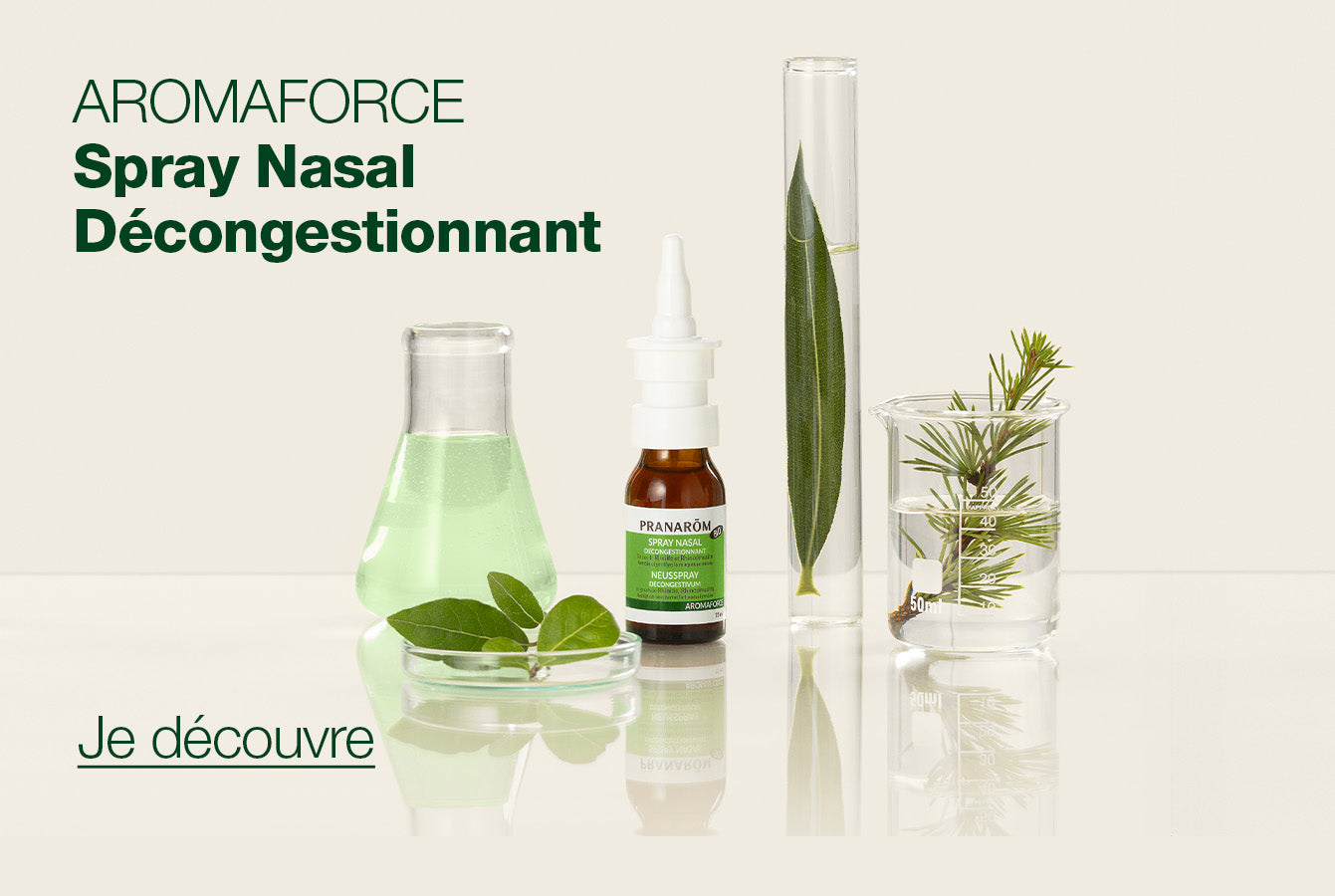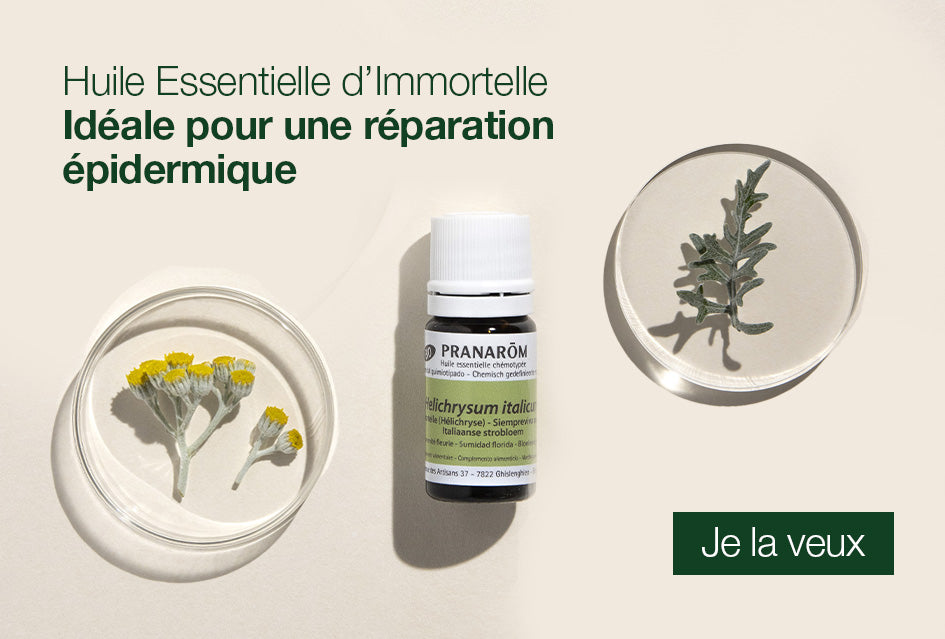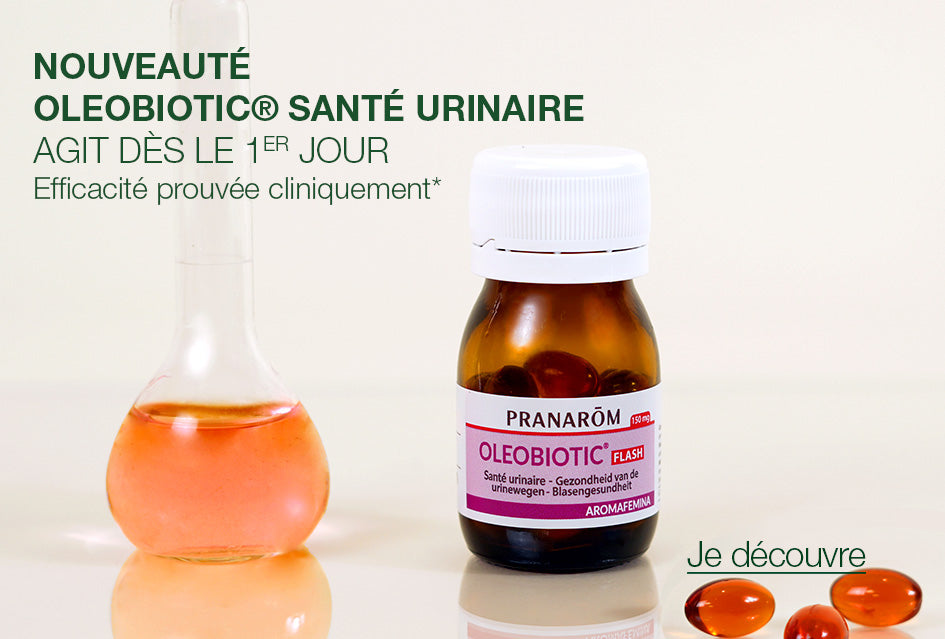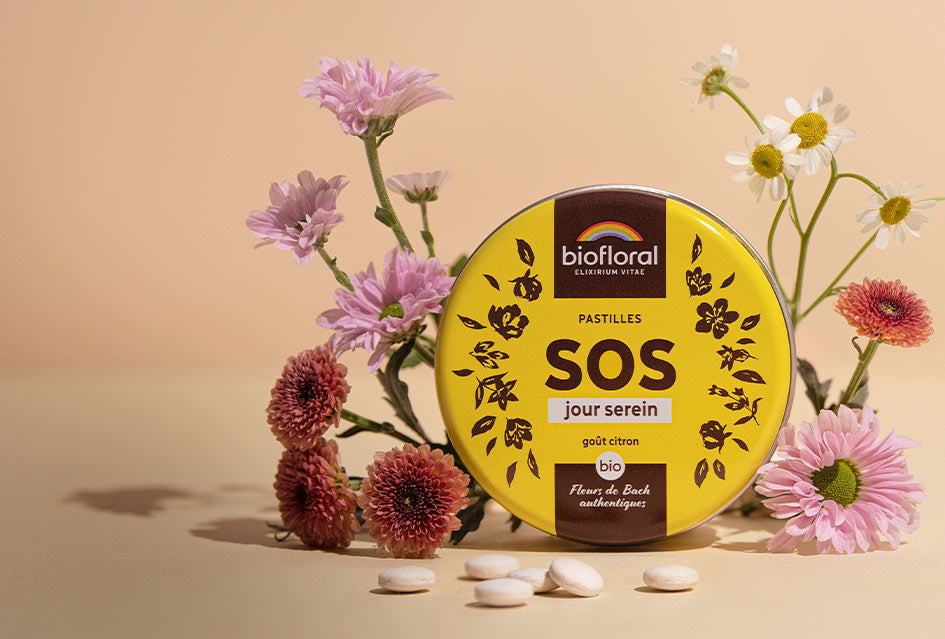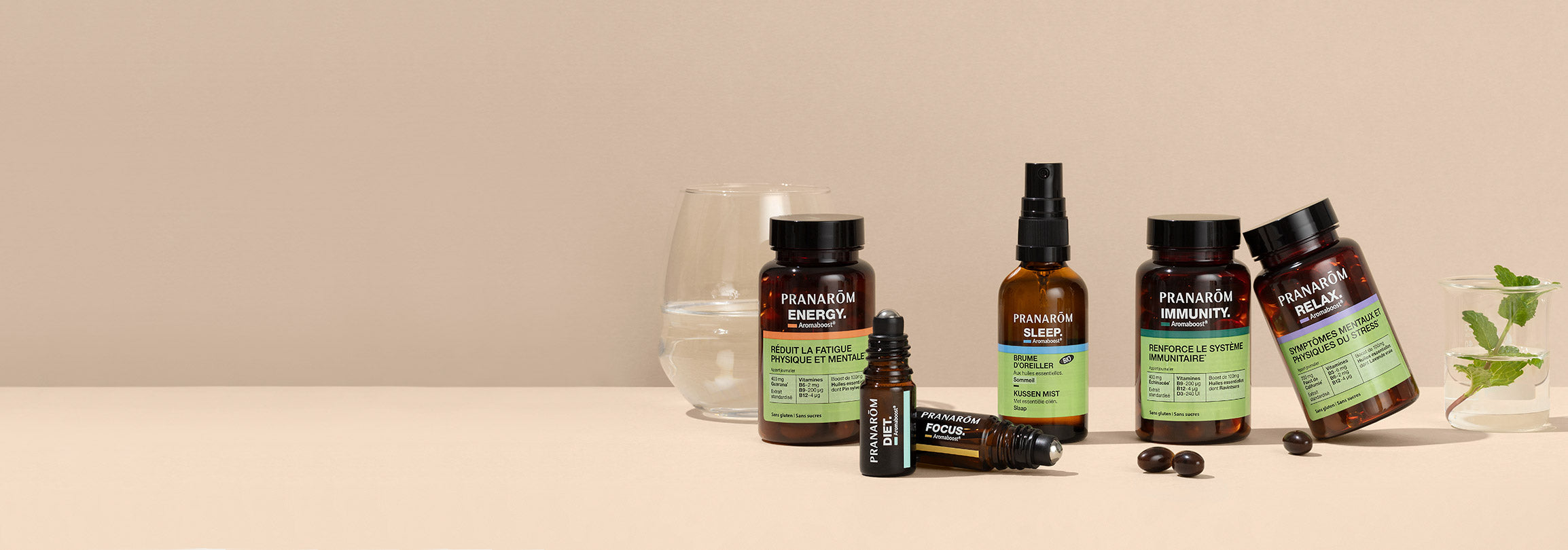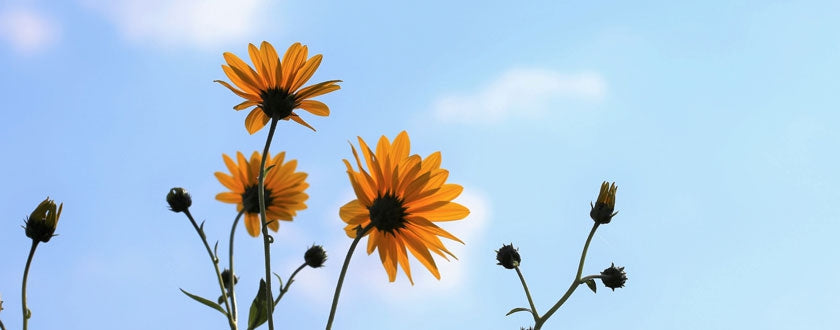Don't be fooled by its appearance, this pretty yellow flower standing on a fifty-centimeter stem called mountain arnica is the plant of adventurers! A true treasure of mountainous regions, you'll have to be bold to pick it, because this yellow-orange plant with a strong scent and covered in small hairs is found at around 800 meters above sea level.
WHAT ARE ITS ACTIVE MOLECULES?
Like most plant extracts, arnica extracts contain a large number of active molecules. Thus, the molecules mainly recognized for Arnica montana bear the barbaric name of sesquiterpene lactones (SQL for short). It is mainly these molecules which will give Arnica its much-prized anti-inflammatory properties as well as an action on the circulatory sphere. [20]
HOW TO IDENTIFY A QUALITY EXTRACT?
The quality of an arnica extract will obviously depend on the quality and quantity of flowers used. However, it is the concentration of active molecules (SQL) that will determine the final quality. Indeed, it is the only guarantee of the extract's action. The essential thing is therefore the concentration of active molecules.
WHY IS PRANARÔM BASED ON THE QUANTITY OF ACTIVE MOLECULES?
The amount of active molecules in arnica flowers can vary from year to year depending on many parameters. This means, for example, that an extract obtained from a constant quantity of flowers will have variable effectiveness.
Furthermore, to ensure optimal effectiveness of Arnica oil, Pranarôm does not base its selection on the quantity of flowers but on the quantity of active molecules. We will therefore use more flowers if they are less rich in active molecules. This process also guarantees consistent quality in each bottle.
DIFFERENT WAYS TO USE ARNICA:
Arnica is traditionally recommended for trauma, bruises, blows, joint and muscle pain, shock, etc. However, there are two different types of preparations and ways to use Arnica. We can distinguish:
Homeopathic preparations:
As for homeopathic preparations, they are mainly available in the form of granules that contain Arnica in infinitesimal quantities. The postulate of homeopathy is to consider that a toxic substance in high doses will have a curative and therefore positive effect at very low concentrations.
However, the effectiveness of homeopathic arnica is still debated within the scientific community. Indeed, the results of experiments obtained so far do not allow us to state with certainty that this approach is effective. [1-8]
Phyto-therapeutic preparations:
Phyto-therapeutic extracts include mother tinctures (maceration of flowers in alcohol), oily macerates (maceration of flowers in vegetable oil), as well as any other extract that contains a significant quantity of active molecules.
Thus, unlike homeopathic preparations, the anti-inflammatory activity of the active molecules present in this type of extract has been reported on numerous occasions by the scientific community. [9-16]
In phytotherapy, the extracts will be applied to the skin pure or diluted. The molecules will then be able to act directly on the area concerned and therefore act in a targeted manner. [17-19]
REFERENCES
[1] Marzotto M, Bonafini C, Olioso D, Baruzzi A, Bettinetti L, Di Leva F, Galbiati E, Bellavite P. (2016) – “Arnica montana Stimulates Extracellular Matrix Gene Expression in a Macrophage Cell Line Differentiated to Wound-Healing Phenotype.” PLoS One. 2016 Nov 10;11(11):e0166340. doi:10.1371/journal.pone.0166340. eCollection 2016.
[2] Iannitti T, Morales-Medina JC, Bellavite P, Rottigni V, Palmieri B. (2016) – “ Effectiveness and Safety of Arnica montana in Post-Surgical Setting, Pain and Inflammation.” Am J Ther. 2016 Jan-Feb;23(1):e184-97. doi: 10.1097/MJT.0000000000000036.
[3] Chaiet SR, Marcus BC. (2016) – “Perioperative Arnica montana for Reduction of Ecchymosis in Rhinoplasty Surgery.” Ann Plast Surg. 2016 May;76(5):477-82. doi: 10.1097/SAP.00000000000000312.
[4] Bellavite P, Marzotto M, Bonafini C. (2018) – “Arnica montana experimental studies: confounders and biases?” J Integr Med. 2018 Mar;16(2):72-76. doi: 10.1016/j.joim.2018.01.001. Epub 2018 Feb 21.
[5] Olioso D, Marzotto M, Bonafini C, Brizzi M, Bellavite P. (2016) – “Arnica montana effects on gene expression in a human macrophage cell line. Evaluation by quantitative Real-Time PCR.” Homeopathy. 2016 May;105(2):131-47. doi: 10.1016/j.homp.2016.02.001. Epub 2016 Mar 14.
[6] Tsintzas D, Vithoulkas G. (2017) – “Treatment of Postoperative Sore Throat With the Aid of the Homeopathic Remedy Arnica montana: A Report of Two Cases.” J Evid Based Complementary Altern Med. 2017 Oct;22(4):926-928. doi:10.1177/2156587217735986. Epub 2017 Nov 2.
[7] Chirumbolo S, Bjørklund G. (2017) – “Homeopathic Arnica from Boiron and post-operative bleeding in mastectomized women in Milan: Statistical flaws and bias to be addressed.” J Tradit Complement Med. 2017 May 19;8(1):1-3. doi: 10.1016/j.jtcme.2017.05.001. eCollection 2018 Jan.
[8] Chirumbolo S, Bjørklund G. (2018) – “Bias and misleading concepts in an Arnica research study. Comments to improve experimental Homeopathy.” J Ayurveda Integra Med. 2018 Jan – Mar;9(1):75-80. doi: 10.1016/j.jaim.2017.01.014. Epub 2018 Feb 26. Review.
[9] Sharma S, Arif M, Nirala RK, Gupta R, Thakur SC. (2016) – “Cumulative therapeutic effects of phytochemicals in Arnica montana flower extract alleviated collagen-induced arthritis: inhibition of both pro-inflammatory mediators and oxidative stress.” J Sci Food Agriculture. 2016 Mar 30;96(5):1500-10. doi:10.1002/jsfa.7252. Epub 2015 May 29.
[10] Klaas CA, Wagner G, Laufer S, Sosa S, Della Loggia R, Bomme U, Pahl HL, Merfort I. (2002) – “Studies on the anti-inflammatory activity of phytopharmaceuticals prepared from Arnica flowers.” Planta Med. 2002 May;68(5):385-91.
[11] Jäger C, Hrenn A, Zwingmann J, Suter A, Merfort I (2009) – “Phytomedicines prepared from Arnica flowers inhibit the transcription factors AP-1 and NF-kappaB and modulate the activity of MMP1 and MMP13 in human and bovine chondrocytes.” Planta Med. 2009 Oct;75(12):1319-25. doi:10.1055/s-0029-1185668. Epub 2009 May 8.
[12] Zwicker P, Schultze N, Niehs S, Albrecht D, Methling K, Wurster M, Wachlin G, Lalk M, Lindequist U, Haertel B. (2017) – “Differential effects of Helenalin, an anti-inflammatory sesquiterpene lactone, on the proteome, metabolome and the oxidative stress response in several immune cell types.” Toxicol In Vitro. 2017 Apr;40:45-54. doi: 10.1016/j.tiv.2016.12.010. Epub 2016 Dec 18.
[13] Lyss G, Schmidt TJ, Merfort I, Pahl HL. (1997) – “Helenalin, an anti-inflammatory sesquiterpene lactone from Arnica, selectively inhibits transcription factor NF-kappaB.” Biol Chem. 1997 Sep;378(9):951-61.
[14] Drogosz J, Janecka A. (2019) – “Helenalin – A Sesquiterpene Lactone with Multidirectional Activity.” Curr Drug Targets. 2019;20(4):444-452. doi:10.2174/1389450119666181012125230.
[15] Lim CB, Fu PY, Ky N, Zhu HS , Feng BMC Complement Altern Med. 2012 Jul 11;12:93. doi:10.1186/1472-6882-12-93.
[16] Berges C, Fuchs D, Opelz G, Daniel V, Naujokat C. (2009) – “Helenalin suppresses essential immune functions of activated CD4+ T cells by multiple mechanisms.” Mol Immunol. 2009 Sep;46(15):2892-901. doi: 10.1016/j.molimm.2009.07.004. Epub 2009 Aug 5.
[17] Wagner S, Suter A, Merfort I. (2004) – “Skin penetration studies of Arnica preparations and of their sesquiterpene lactones.” Planta Med. 2004 Oct;70(10):897-903.
[18] Wagner S, Merfort I. (2007) – “Skin penetration behavior of sesquiterpene lactones from different Arnica preparations using a validated GC-MSD method.” J Pharm Biomed Anal. 2007 Jan 4;43(1):32-8. Epub 2006 Aug 23.
[19] Bergonzi MC, Bilia AR, Casiraghi A, Cilurzo F, Minghetti P, Montanari L, Vincieri FF. (2005) – “Evaluation of skin permeability of sesquiterpenes of an innovative supercritical carbon dioxide Arnica extract by HPLC/DAD/MS.” Pharmacy. 2005 Jan;60(1):36-8.
[20] Schröder H, Lösche W, Strobach H, Leven W, Willuhn G, Till U, Schrör K. (1990) – “Helenalin and 11 alpha,13-dihydrohelenalin, two constituents from Arnica montana L., inhibit human platelet function via thiol-dependent pathways.” Thromb Res. 1990 Mar 15;57(6):839-45.
[21] Seemann A, Wallner T, Poschlod P, Heilmann J. (2010) – “Variation of sesquiterpene lactone contents in different Arnica montana populations: influence of ecological parameters.” Planta Med. 2010 May;76(8):837-42. doi:10.1055/s-0029-1240797. Epub 2010 Jan 25.


